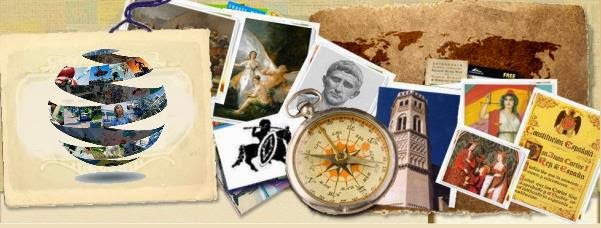What is the Rococo? | Art
Rococo art is the ultimate expression of Baroque art and is originally from France in the mid-seventeenth century. While the Baroque was characterized by ornate style of decorating churches, paintings and other works of art, Rococo leads to certain extremes of good taste and refinement that we owe to King Louis XV, it is thought that this refinement has to do with that restraint king wanted to govern and try to forget or conceal the excesses of his predecessor Louis XIV.
The term comes from the French word "rocaille" I play refers to the cobbled paths of the gardens, which gave a sense of few decorations in some places and many others. This is a characteristic of this style and see spaces where unadorned not placed (the rocaille) and places where there were many ornaments. It is a precursor of neoclassical art turns her eyes as the Greco-Roman styles, the mythology and nature with details reminiscent of the chiaroscuro (in painting especially) who will fashion a few centuries later.
In this art many see the principles of the French Revolution because the Baroque art is serving monarchs and nobility, however Rococo is encouraged, commissioned and purchased by aristocrats and bourgeois mainly. The artist also works with more freedom, for aristocrats and bourgeois are not as educated as many of the nobles, with clear exceptions, then work more to your liking and influencing more style. It is typical of France and from there radiates throughout Europe. We have the Palace of Versailles as an example.
In Spain there are many examples such as the Cathedral of Murcia. In America we are many examples as influenced colonial art, though confused and merges with the Baroque. In Costa Rica we have several churches melting baroque and rococo, also mix various styles with varying success and taste but I must confess that the chapel of San Rafael Top of Homeless and the chapel of Christ the King had (either exist today) that style and left me a preference for ornate and good taste (I had more than five years). I think that is why I have always admired this art.

The term comes from the French word "rocaille" I play refers to the cobbled paths of the gardens, which gave a sense of few decorations in some places and many others. This is a characteristic of this style and see spaces where unadorned not placed (the rocaille) and places where there were many ornaments. It is a precursor of neoclassical art turns her eyes as the Greco-Roman styles, the mythology and nature with details reminiscent of the chiaroscuro (in painting especially) who will fashion a few centuries later.
In this art many see the principles of the French Revolution because the Baroque art is serving monarchs and nobility, however Rococo is encouraged, commissioned and purchased by aristocrats and bourgeois mainly. The artist also works with more freedom, for aristocrats and bourgeois are not as educated as many of the nobles, with clear exceptions, then work more to your liking and influencing more style. It is typical of France and from there radiates throughout Europe. We have the Palace of Versailles as an example.
In Spain there are many examples such as the Cathedral of Murcia. In America we are many examples as influenced colonial art, though confused and merges with the Baroque. In Costa Rica we have several churches melting baroque and rococo, also mix various styles with varying success and taste but I must confess that the chapel of San Rafael Top of Homeless and the chapel of Christ the King had (either exist today) that style and left me a preference for ornate and good taste (I had more than five years). I think that is why I have always admired this art.
Translated for educational purposes.
